
Some stuff from my upcoming album, titled "Some Sort of Kool-Aid." Enjoy.
More Links!
You can hear more of my music and stay posted for future uploads by following me on SoundCloud and Bandcamp!

Just Another Day from Kenya Sheppard on Vimeo.
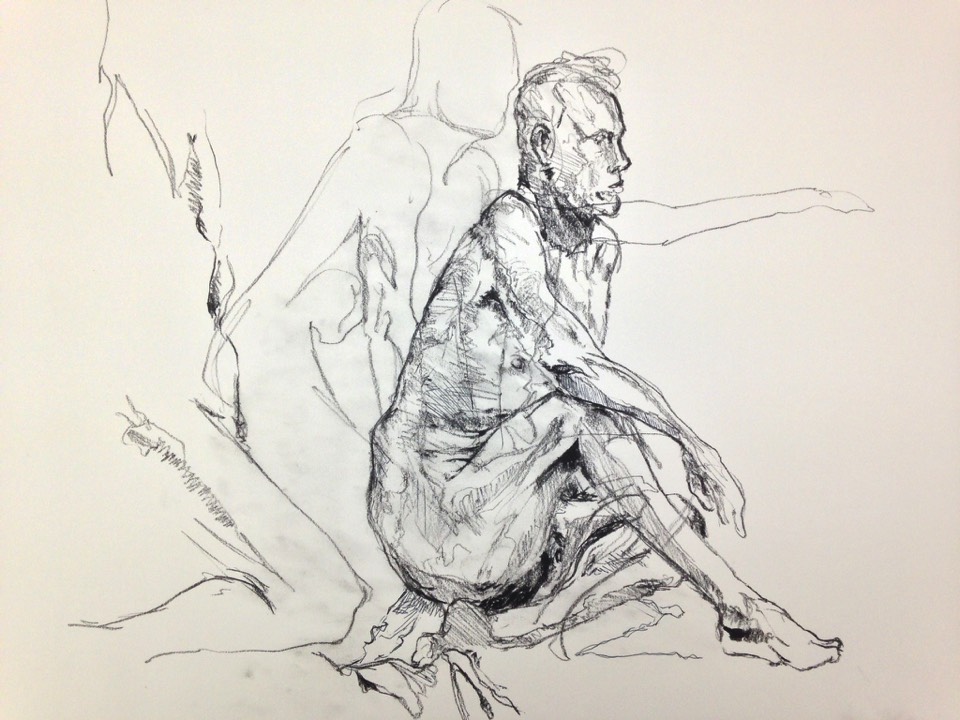
Figure Drawing exercise, 02/15. Charcoal and ball point pen on paper.
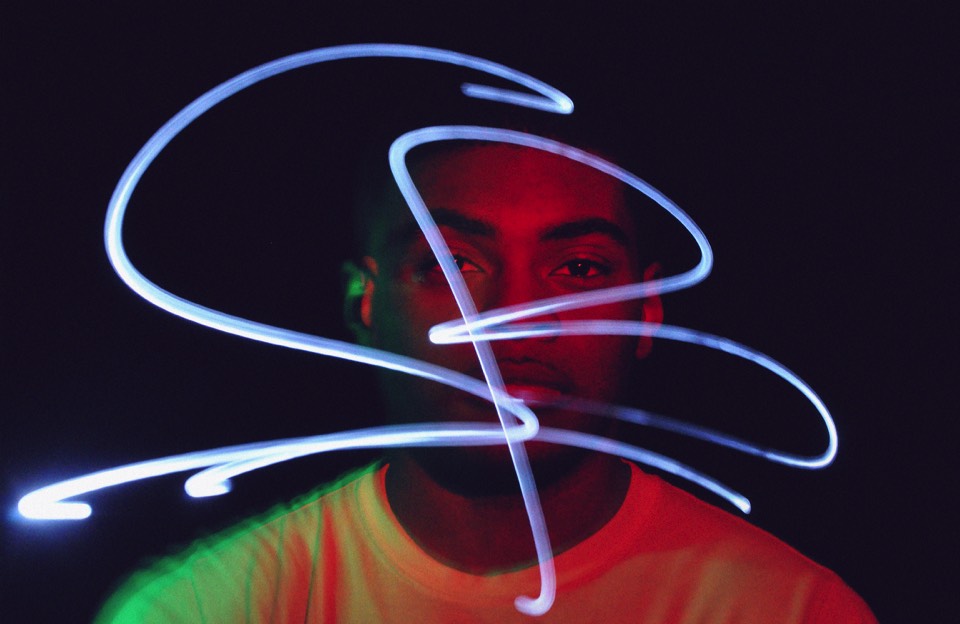
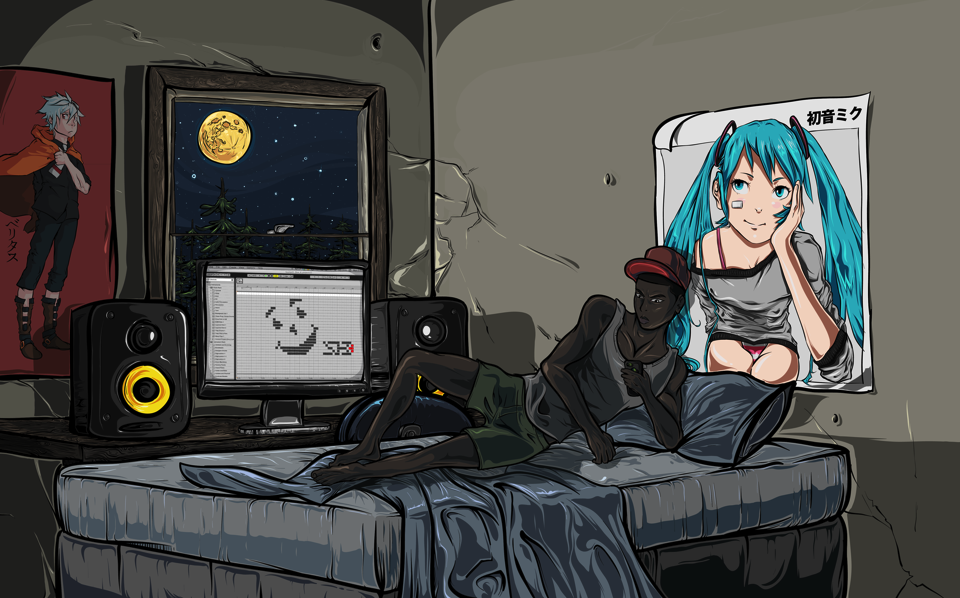
Some Sort of Kool-aid, 09/14. Digital Painting.
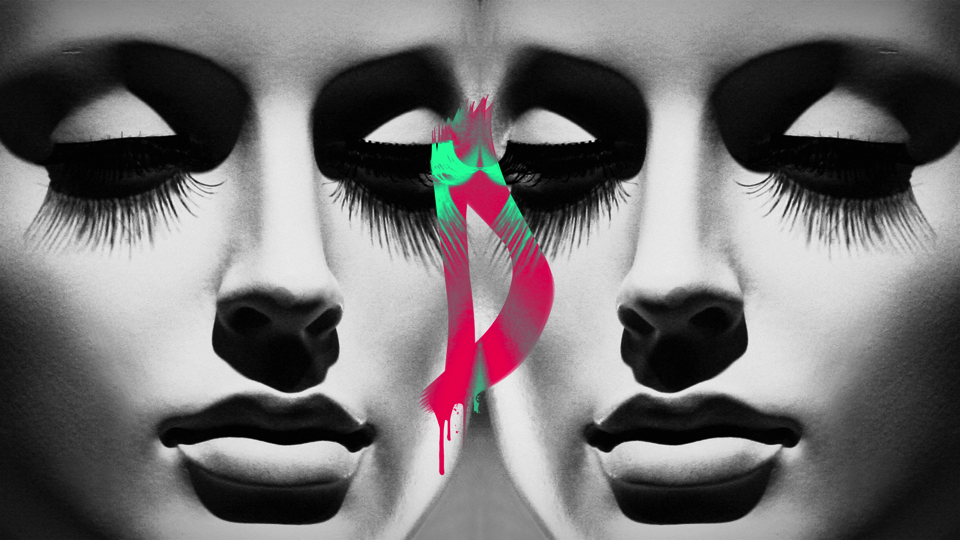
Decode, 07/13. Digital media.
Showdown from Kenya Sheppard on Vimeo.

Round One: Start from Kenya Sheppard on Vimeo.

I'll be using this space to post some of my thoughts in regard to papers and essays that I find to be particularly interesting.

In this section I'll keep a record of notable events that occur during my Hybrid Media class during the Fall of 2015.
09/09/15
This week, we were assigned a reading that was an excerpt from 100 Video Artists. I enjoyed this reading because it provided a comprehensive history of the relationship between technology and the consumer in American culture. Much of the rise in video artists and video based artwork was a result of the commercialization of the video camera. Video art during the 1960s exemplified this truth, especially since the first Sony cameras that were available were not of particularly great quality.
This part of the reading stuck out to me because it reinforced the disconnect between cinema and early video art that we have been discussing in class.
I also really enjoyed Nam June Paik's piece Mirror Stage. Paik created Mirror Stage in 1986, and the piece embodies the aesthetic surrounded with early video artwork and the methods utilized for displaying it.
This week, we were assigned a reading that was an excerpt from 100 Video Artists. I enjoyed this reading because it provided a comprehensive history of the relationship between technology and the consumer in American culture. Much of the rise in video artists and video based artwork was a result of the commercialization of the video camera. Video art during the 1960s exemplified this truth, especially since the first Sony cameras that were available were not of particularly great quality.
This part of the reading stuck out to me because it reinforced the disconnect between cinema and early video art that we have been discussing in class.
I also really enjoyed Nam June Paik's piece Mirror Stage. Paik created Mirror Stage in 1986, and the piece embodies the aesthetic surrounded with early video artwork and the methods utilized for displaying it.
09/11/15
I have recently found myself constantly drawn to a style of dance that comes from "Popping." The style I'm talking about is called "Tutting." I love the geometric movements involved with this dance. I also love how the experienced dancer can use his/her body to create shapes primarily out of negative space. I always wish I had more time to practice different dances, and this style of dance would be at the top of my list of things to learn.
Below are two videos I especially love. They both show off the expressivity that Tutting brings to the table, and they also show just how creative each dancer can be while adding his/her own unique flavor to the dance style.
I have recently found myself constantly drawn to a style of dance that comes from "Popping." The style I'm talking about is called "Tutting." I love the geometric movements involved with this dance. I also love how the experienced dancer can use his/her body to create shapes primarily out of negative space. I always wish I had more time to practice different dances, and this style of dance would be at the top of my list of things to learn.
Below are two videos I especially love. They both show off the expressivity that Tutting brings to the table, and they also show just how creative each dancer can be while adding his/her own unique flavor to the dance style.
09/16/15
Below is my first project for this course. In this project, my intention was to facilitate a dichotomy between visual and auditory stimuli. The main subject matter in the video is a metal structure in the middle of a wooded area. The metal structure seems to be out of place because of the amount of vegetation that surrounds it.
To force my audience to consider the relationship between a clearly manmade structure and a more natural environment, I supplemented the video image with a separately recorded audio track. The audio playing is a bus as it makes a stop. The mechanical noises juxtaposed with the visual stimuli creates a sense of ambiguity in the piece, and viewers have to think in depth in order to try and understand what they are seeing and hearing.
Below is my first project for this course. In this project, my intention was to facilitate a dichotomy between visual and auditory stimuli. The main subject matter in the video is a metal structure in the middle of a wooded area. The metal structure seems to be out of place because of the amount of vegetation that surrounds it.
To force my audience to consider the relationship between a clearly manmade structure and a more natural environment, I supplemented the video image with a separately recorded audio track. The audio playing is a bus as it makes a stop. The mechanical noises juxtaposed with the visual stimuli creates a sense of ambiguity in the piece, and viewers have to think in depth in order to try and understand what they are seeing and hearing.
Silver and Green from Kenya Sheppard on Vimeo.
09/21/15
During today's class, I gave a presentation (alongside my classmate Guava) on Video, Flows and Real Time by Maurizio Lazzarato. The research we conducted helped us to understand the article, but we also gained some more knowledge along the way. One of the first figures to know in order to understand this article is Henri Bergson.
Henri Bergson was a French philosopher who was influential during the first half of the 20th century. Bergson's philosophical insights are relevant to artists because they underline the significance of the perceptive/experiential process that defines our scope of reality. When we question the nature of reality as we understand it, the modes of explanation that we typically use can often become obsolete.
I also thought it was important to note that our grasp on reality is largely defined by the linear movement of time. Video artists can take advantage of this truth and effectively alter reality by manipulating time.
It seems that many artists have a basic understanding of some of these concepts (at least indirectly). However, artists who are directly and actively aware of the methods they can use to control/alter their audiences' perceptions of reality can use these methods to communicate a message to their audiences. I believe that if artists utilized this tactic more often, art would be a lot more accessible to everyone.
During today's class, I gave a presentation (alongside my classmate Guava) on Video, Flows and Real Time by Maurizio Lazzarato. The research we conducted helped us to understand the article, but we also gained some more knowledge along the way. One of the first figures to know in order to understand this article is Henri Bergson.
Henri Bergson was a French philosopher who was influential during the first half of the 20th century. Bergson's philosophical insights are relevant to artists because they underline the significance of the perceptive/experiential process that defines our scope of reality. When we question the nature of reality as we understand it, the modes of explanation that we typically use can often become obsolete.
I also thought it was important to note that our grasp on reality is largely defined by the linear movement of time. Video artists can take advantage of this truth and effectively alter reality by manipulating time.
It seems that many artists have a basic understanding of some of these concepts (at least indirectly). However, artists who are directly and actively aware of the methods they can use to control/alter their audiences' perceptions of reality can use these methods to communicate a message to their audiences. I believe that if artists utilized this tactic more often, art would be a lot more accessible to everyone.
09/23/15
I have been thinking a lot recently about my personal artwork and some of the factors that affect it. When I think about my art, I think of it as a narrative of my experiences and opinions. Growing up as an African American is definitely a unique experience, and much of my visual and sound based artwork has elements that allude to my experience as an African American artist.
Depending on where I am, I get different feelings about other people's perception of the positions and opinions I try to voice in my artwork. As time goes on, I've learned that censoring my artistic voice is never a good idea. However it is important for me to frame my arguments in ways that will be well received by my current audience. Unfortunately, not everyone who I show my artwork to will be able to directly relate to the places it comes from.
While it can be frustrating to feel alienated for creating the art I'm most passionate about in an academic environment, it is still my responsibility as an artist to do the best I can to share with others the messages that speak the strongest to me.
I have been thinking a lot recently about my personal artwork and some of the factors that affect it. When I think about my art, I think of it as a narrative of my experiences and opinions. Growing up as an African American is definitely a unique experience, and much of my visual and sound based artwork has elements that allude to my experience as an African American artist.
Depending on where I am, I get different feelings about other people's perception of the positions and opinions I try to voice in my artwork. As time goes on, I've learned that censoring my artistic voice is never a good idea. However it is important for me to frame my arguments in ways that will be well received by my current audience. Unfortunately, not everyone who I show my artwork to will be able to directly relate to the places it comes from.
While it can be frustrating to feel alienated for creating the art I'm most passionate about in an academic environment, it is still my responsibility as an artist to do the best I can to share with others the messages that speak the strongest to me.
10/05/15
Today's lighting workshop was very helpful, and there was much more to be gained than just specific information about the lights in Tjaden's 324 studio. Jen Gioffre is a great resource in Tjaden, and anyone interested in photography videography, lighting, or sound would find that Jen has a lot to offer in those fields.
All of the demonstrations I've been to in Tjaden 324 have been beneficial to me. I remember going to a demo while I took Professor Locey's photography class: Identity in the Global Lens that was particularly inspiring to me. The man giving the demonstration was a representative from Hasselblad, and he was demonstrating a digital Hasselblad camera alongside the software that comes with it.
Getting to see all the features and getting to try using some of them myself helped me to understand just how many resources and equipment we have access to. I'm appreciative that I can use the resources the art department provides to further expand my understanding of different mediums and processes.
Today's lighting workshop was very helpful, and there was much more to be gained than just specific information about the lights in Tjaden's 324 studio. Jen Gioffre is a great resource in Tjaden, and anyone interested in photography videography, lighting, or sound would find that Jen has a lot to offer in those fields.
All of the demonstrations I've been to in Tjaden 324 have been beneficial to me. I remember going to a demo while I took Professor Locey's photography class: Identity in the Global Lens that was particularly inspiring to me. The man giving the demonstration was a representative from Hasselblad, and he was demonstrating a digital Hasselblad camera alongside the software that comes with it.
Getting to see all the features and getting to try using some of them myself helped me to understand just how many resources and equipment we have access to. I'm appreciative that I can use the resources the art department provides to further expand my understanding of different mediums and processes.
10/12/15
Although I am not entirely sure how I will execute this, I want my final project to surround my music and sound based interests. I feel the most inspired when I am writing and producing music digitally, so I would like to be able to share this inspiration with the class.
My inspiration for the sound-based work I do varies a lot, but recently I have been attracted to a style of Hip-Hop production that features a lot of heavy filtering, specific manipulation of bass frequencies, and sample work that makes vocal samples sound like instrumentation, or sometimes even like percussive elements. Below are two productions by relatively unknown artists who I've been following pretty closely. Their work has been peaking my curiosity as of late.
Although I am not entirely sure how I will execute this, I want my final project to surround my music and sound based interests. I feel the most inspired when I am writing and producing music digitally, so I would like to be able to share this inspiration with the class.
My inspiration for the sound-based work I do varies a lot, but recently I have been attracted to a style of Hip-Hop production that features a lot of heavy filtering, specific manipulation of bass frequencies, and sample work that makes vocal samples sound like instrumentation, or sometimes even like percussive elements. Below are two productions by relatively unknown artists who I've been following pretty closely. Their work has been peaking my curiosity as of late.
10/19/15
Today we had our midterm critique in class. I got to discuss my concepts and ideas with Professor Ferro, and I'm very glad I did. During the semester, I have been investigating different ways for me to create the art that I feel fulfilled by, but in a way that is received well by the artists around me. I prefer to make sound-based pieces, and the feeling I get from producing my own musical compositions is like no other. I often get the feeling that this type of art will be rejected by the art department, and people will think I am trying to go against the existing conventional artistic practices. While I have no interest in rebelling against any existing ideas of art and its significance in an academic context, I often feel alienated in the art department since my art does not always directly fit a set of definitions created by someone else.
I appreciate what Professor Ferro is doing for me in this course. After getting the chance to have a few discussions with her about my artistic and academic goals, she has been nothing but supportive of the ideas that I bounce off of her. Also, I am thankful that she has allowed me the creative space to be myself creatively. When it comes to this course and my goals for giving an exhibition that people will respond positively to, Professor Ferro is helping me to explore ways to push myself, but also stay true to who I am as an artist so that I can create work that is a direct reflection of who I am.
Below is my second project for this class. It is a combination of video and sound projects that I combined into one piece. The piece contains a musical composition that I wrote, a video project I recorded with a few friends from the Shinnecock Native American Reservation, and a voiceover sound piece that I wrote and recorded on my own.
Today we had our midterm critique in class. I got to discuss my concepts and ideas with Professor Ferro, and I'm very glad I did. During the semester, I have been investigating different ways for me to create the art that I feel fulfilled by, but in a way that is received well by the artists around me. I prefer to make sound-based pieces, and the feeling I get from producing my own musical compositions is like no other. I often get the feeling that this type of art will be rejected by the art department, and people will think I am trying to go against the existing conventional artistic practices. While I have no interest in rebelling against any existing ideas of art and its significance in an academic context, I often feel alienated in the art department since my art does not always directly fit a set of definitions created by someone else.
I appreciate what Professor Ferro is doing for me in this course. After getting the chance to have a few discussions with her about my artistic and academic goals, she has been nothing but supportive of the ideas that I bounce off of her. Also, I am thankful that she has allowed me the creative space to be myself creatively. When it comes to this course and my goals for giving an exhibition that people will respond positively to, Professor Ferro is helping me to explore ways to push myself, but also stay true to who I am as an artist so that I can create work that is a direct reflection of who I am.
Below is my second project for this class. It is a combination of video and sound projects that I combined into one piece. The piece contains a musical composition that I wrote, a video project I recorded with a few friends from the Shinnecock Native American Reservation, and a voiceover sound piece that I wrote and recorded on my own.
10/21/15
As we continue to discuss different digital art mediums in class, I have been looking up sources for my own inspiration during my own time. One of the mediums we spent some time time discussing in class is animation. Animation is particularly relevant in the scope of Hybrid Media because it represents a direct relationship between "the still" and the moving image. Animation represents the result of adding another dimension to artwork that can be viewed indefinitely.
I enjoy the work of South African artist William Kentridge; his unique style highlights the relationship between the still image and the moving image in a very conscious, analytical way. However the animations that inspire me the most are cartoons that have roots in different cultures. One of my favorite current animators is LeSean Thomas. He is known for much of his animation work in the United States and South Korea for shows such as The Boondocks, Black Dynamite, and Ben 10.
Below is a video that LeSean Uploaded to Youtube last year. It shows the process sequence for the second season opening of Black Dynamite (Thomas was the supervising director of season two of Black Dynamite).
As we continue to discuss different digital art mediums in class, I have been looking up sources for my own inspiration during my own time. One of the mediums we spent some time time discussing in class is animation. Animation is particularly relevant in the scope of Hybrid Media because it represents a direct relationship between "the still" and the moving image. Animation represents the result of adding another dimension to artwork that can be viewed indefinitely.
I enjoy the work of South African artist William Kentridge; his unique style highlights the relationship between the still image and the moving image in a very conscious, analytical way. However the animations that inspire me the most are cartoons that have roots in different cultures. One of my favorite current animators is LeSean Thomas. He is known for much of his animation work in the United States and South Korea for shows such as The Boondocks, Black Dynamite, and Ben 10.
Below is a video that LeSean Uploaded to Youtube last year. It shows the process sequence for the second season opening of Black Dynamite (Thomas was the supervising director of season two of Black Dynamite).
11/04/15
After spending some time going over my work so far in this course and having a few brief discussions with Professor Ferro, I put together a short list of artists who I can study to draw inspiration and ideas from. These artists are:
Janet Cardiff & George Burel
Stephen Vitiello
Andrew Deutsch
Christian Marclay
DJ Spooky
Art Jones
Mendi & Keith Obadike
Keith Piper
Fritz Haeg
Today was also my second reading presentation. I gave my presentation alongside classmates Guava and Naima. The reading was another excerpt from Art and the Moving Image. This time however, we focused on the following concepts: The Viewer/Suture, Obsolescence, Immersion, Replay and Remake, and the Still.
My favorite part of this reading was the part that focused on Roland Barthes' theory he explains in his essay titled: The Death of the Author. In this essay, Barthes analyzes the nature of creativity and the significance of context in the artistic process. He suggests we should not place as much weight we do on any individual who creates artwork, since he/she was inspired by the work of countless others who came before them.
Understanding Barthes' theory helped me to consider some of the more far-reaching, metaphysical implications creativity has. I believe it is necessary as artists that we have as complete of an understanding as possible of what exactly we do when we create. We should also know and understand the consequences the artwork we create has on the society that surrounds it. Learning about concepts like Barthes' The Death of the Author has brought me closer to understanding creativity, and its direct implications on the world around us.
After spending some time going over my work so far in this course and having a few brief discussions with Professor Ferro, I put together a short list of artists who I can study to draw inspiration and ideas from. These artists are:
Janet Cardiff & George Burel
Stephen Vitiello
Andrew Deutsch
Christian Marclay
DJ Spooky
Art Jones
Mendi & Keith Obadike
Keith Piper
Fritz Haeg
Today was also my second reading presentation. I gave my presentation alongside classmates Guava and Naima. The reading was another excerpt from Art and the Moving Image. This time however, we focused on the following concepts: The Viewer/Suture, Obsolescence, Immersion, Replay and Remake, and the Still.
My favorite part of this reading was the part that focused on Roland Barthes' theory he explains in his essay titled: The Death of the Author. In this essay, Barthes analyzes the nature of creativity and the significance of context in the artistic process. He suggests we should not place as much weight we do on any individual who creates artwork, since he/she was inspired by the work of countless others who came before them.
Understanding Barthes' theory helped me to consider some of the more far-reaching, metaphysical implications creativity has. I believe it is necessary as artists that we have as complete of an understanding as possible of what exactly we do when we create. We should also know and understand the consequences the artwork we create has on the society that surrounds it. Learning about concepts like Barthes' The Death of the Author has brought me closer to understanding creativity, and its direct implications on the world around us.
11/09/15
After doing some additional research, I found myself inspired by a piece that I actually already saw. The piece is an immersive sound-based structure called The 40 Part Motet. It is currently on display at the Museum of Modern Art in New York City. The installation was put together by artist Janet Cardiff and George Bures Miller in 2013. The original musical piece was composed by Thomas Tallis in 1575. After looking at footage of the piece (and recalling my reaction after seeing it myself in MoMa), I instantly started thinking of methods I could use to make my compositions part of a physical, tangible space.
I constantly find myself intrigued by the very stark boundary that exists between the digital and the non-digital. Creating artwork that blurs and/or destroys this boundary could help people look at digital art with a new, refreshed outlook.
Below is footage of The 40 Part Motet. I chose to include this video on my blog because it shows how each speaker in the installation represents one "voice." Collectively, the voices come together to create the illusion of a choir actually singing the motet in the installation space.
After doing some additional research, I found myself inspired by a piece that I actually already saw. The piece is an immersive sound-based structure called The 40 Part Motet. It is currently on display at the Museum of Modern Art in New York City. The installation was put together by artist Janet Cardiff and George Bures Miller in 2013. The original musical piece was composed by Thomas Tallis in 1575. After looking at footage of the piece (and recalling my reaction after seeing it myself in MoMa), I instantly started thinking of methods I could use to make my compositions part of a physical, tangible space.
I constantly find myself intrigued by the very stark boundary that exists between the digital and the non-digital. Creating artwork that blurs and/or destroys this boundary could help people look at digital art with a new, refreshed outlook.
Below is footage of The 40 Part Motet. I chose to include this video on my blog because it shows how each speaker in the installation represents one "voice." Collectively, the voices come together to create the illusion of a choir actually singing the motet in the installation space.
11/27/15
Although we are currently on break, I had the opportunity to experiment with some photography equipment today, and I wanted to share what was on my mind as I tested this equipment. I got to fly a drone and take some footage with it. The particular model I was flying had to be linked to software on a tablet in order to correctly calibrate.
The way new forms of accessible technology are being integrated to allow the consumer to have creative power is part of what I believe is transforming the art world as we know it. The fact that so many mediums and forms of creative expression are so available and affordable (relatively speaking, of course) says a lot about the opportunities that exist for the modern artist. The growing accessibility in modern creative spheres is especially important for digital artists and artists who depend on computers for the creation or distribution of their artwork. Much of the musical work I do on the computer depends entirely on my ability to use certain software. Some of the software that I currently use to compose, produce and engineer the sounds that I do would have been simply unavailable to me even just a few years ago.
I am thankful for the current level of accessibility in the art and music worlds today, however I still think it is very important that all members of these spheres should be aware that our perception of art relies on art that already exists. Since there are so many opportunities for new artists to create completely unique artwork with the tools that are now available to them, our interpretations of the new artwork being made need to be completely openminded.
Below is a low-resolution image of me and my younger brother Camara (who is also an artist) testing out a pair of drones.
Although we are currently on break, I had the opportunity to experiment with some photography equipment today, and I wanted to share what was on my mind as I tested this equipment. I got to fly a drone and take some footage with it. The particular model I was flying had to be linked to software on a tablet in order to correctly calibrate.
The way new forms of accessible technology are being integrated to allow the consumer to have creative power is part of what I believe is transforming the art world as we know it. The fact that so many mediums and forms of creative expression are so available and affordable (relatively speaking, of course) says a lot about the opportunities that exist for the modern artist. The growing accessibility in modern creative spheres is especially important for digital artists and artists who depend on computers for the creation or distribution of their artwork. Much of the musical work I do on the computer depends entirely on my ability to use certain software. Some of the software that I currently use to compose, produce and engineer the sounds that I do would have been simply unavailable to me even just a few years ago.
I am thankful for the current level of accessibility in the art and music worlds today, however I still think it is very important that all members of these spheres should be aware that our perception of art relies on art that already exists. Since there are so many opportunities for new artists to create completely unique artwork with the tools that are now available to them, our interpretations of the new artwork being made need to be completely openminded.
Below is a low-resolution image of me and my younger brother Camara (who is also an artist) testing out a pair of drones.
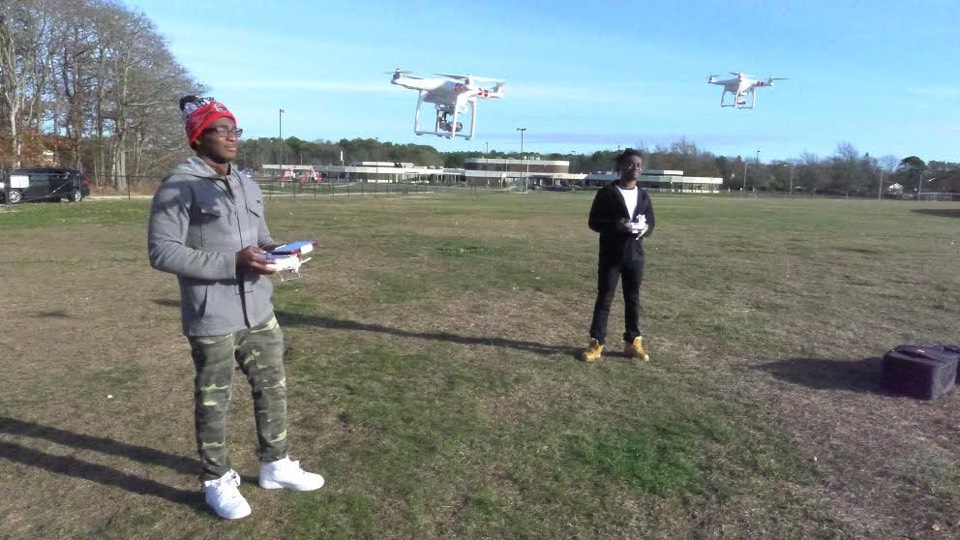
12/09/15
Today was our final critique for our final projects. As I had discussed with Professor Ferro, my project was an immersive sound-space installation that was set up to encapsulate the audience. Different frequency ranges were set up to play from different speakers in the space. Unfortunately, due to time constraints I was not able to play the installation for the whole class, but I was able to set it up again in Professor Ferro's office and play the sound pieces for her and a few of my classmates.
After the critique I was able to be self-critical and view my work as someone else might have viewed it. With the help of Professor Ferro and my classmates, I determined I still have not fully mastered how I can incorporate my love of composing music into my digital artwork installations. I do know that this course has brought me a large step closer to creating a physical space in which my audience can directly interact/respond to my digital sound creations, and I am very thankful for that!
Below is an image Professor Ferro took of me setting up my installation.
Today was our final critique for our final projects. As I had discussed with Professor Ferro, my project was an immersive sound-space installation that was set up to encapsulate the audience. Different frequency ranges were set up to play from different speakers in the space. Unfortunately, due to time constraints I was not able to play the installation for the whole class, but I was able to set it up again in Professor Ferro's office and play the sound pieces for her and a few of my classmates.
After the critique I was able to be self-critical and view my work as someone else might have viewed it. With the help of Professor Ferro and my classmates, I determined I still have not fully mastered how I can incorporate my love of composing music into my digital artwork installations. I do know that this course has brought me a large step closer to creating a physical space in which my audience can directly interact/respond to my digital sound creations, and I am very thankful for that!
Below is an image Professor Ferro took of me setting up my installation.
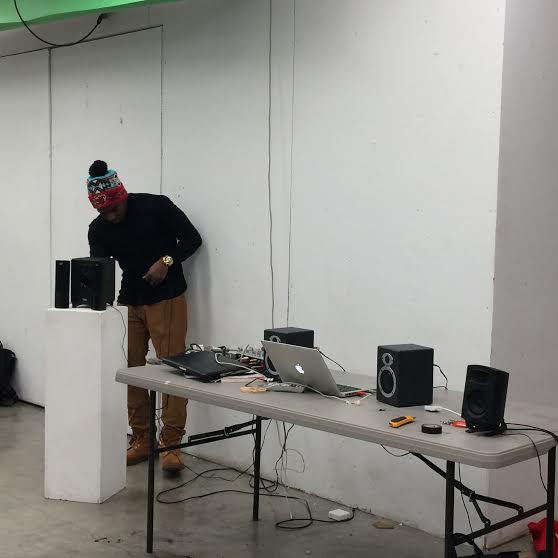
Below is one of the sound pieces I worked on for class this semester. The project is titled: Patience. I included Patience in my final installation, but this version has vocals that I recorded along with a saxophone solo recorded by a musician friend of mine, and a vocal section recorded by an Detroit-based artist that I have been working with for the last few years. I hope you enjoy!